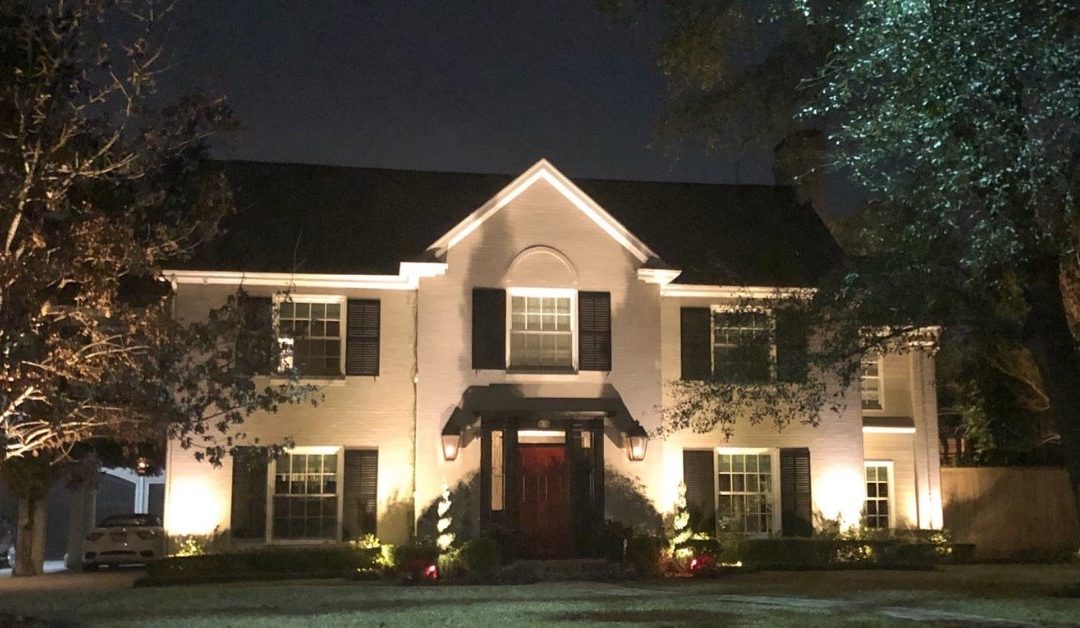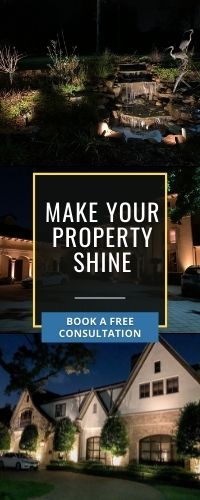Up until 2010 most residential outdoor lighting systems ran on line voltage, the 120v/AC current that powers your interior lighting and most of your appliances. Fixtures generally were halogen, providing terrific illumination with a warm, amber quality. Light Emitting Diodes (LED), an energy-efficient low-voltage (12v DC) alternative, then began to make rapid technological advances and now are preferred by most landscape lighting professionals.
Once LEDs achieved qualitative parity with halogen, the advantages became persuasive. Energy costs are 60%-70% lower, and LED bulbs can last 3-10 years as opposed to 8-12 months for halogen. There are safety benefits, too. Halogen bulbs are hot, which makes some placements off-limits to them. LEDs, in contrast, run cool and can be placed anywhere the lighting design calls for without fear of burning the foliage. The line voltage wiring for halogen poses the risk of electric shock, an LED system’s low 12 volts doesn’t, not even to children and pets.
Ease of installation is another advantage of low-voltage systems. Line-voltage wiring has to be buried deeper, sometimes requiring a trenching machine, and run through conduits. Low-voltage line can be buried shallow, by hand, with minimal lawn damage, and conduits are not needed.
That’s why the web is full of low-voltage landscape lighting DIY tutorials inspired by the LED technological revolution. It’s true that a licensed electrician is no longer required, as was the case with line-voltage wiring. A reasonably handy do-it-yourselfer can install a low-voltage system with a good chance of avoiding disaster.
As a homeowner, I have higher aspirations for my property than just avoiding disaster. I want much more than that, and I know that in any kind of installation involving multiple types of components there are layers of complexity that it takes lots of experience to master. Landscape lighting is like that, and the balancing of aesthetic, safety, security, and technical goals of a project is what I’ve mastered over many years.
An expert accumulates a bag of values, if-then rules, principles, and memories that guide him from design through installation and fine-tuning of a project. For example, I know that in selecting hardware the importance of material from highest to lowest is as follows; 1. how the system is wired 2. the right type of LED bulb 3. transformer 4. the fixture. I know that there should be no more than 3-4 lights on each hot wire coming from the transformer, and never daisy chained. Experience has taught me that designing and thinking through a system needs to follow an order that only becomes familiar after years of effort.


